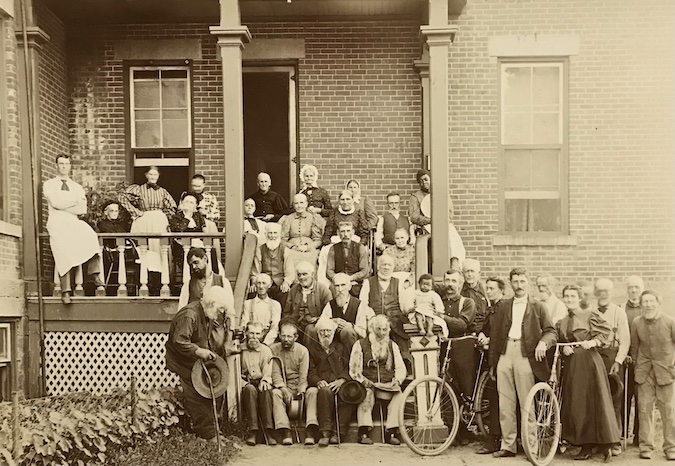In 1923, ‘Poorhouse’ in Albion served 120 of county’s old, infirm and homeless
Male residents outnumbered females by 3 to 1; 23 deaths reported that year at site
By Catherine Cooper, Orleans County Historian
Illuminating Orleans, Vol. 3 No. 2
ALBION – “Superintendent of the Poor” and “Overseers of the Poor.” These quaint job titles were still in use in New York state 100 years ago, when care of the poor and indigent was considered a local responsibility.
The Orleans County Almshouse or “Poorhouse” was located on West County House Road in the Town of Albion. The three-story building built in 1878 accommodated 140 inmates (“inmates” was the term used at that time) and included a residence for the Supervisor who lived on-site. An infirmary was added in the early 1900s. People with a variety of needs and misfortunes were accommodated – paupers, the homeless, the abandoned, the old and the infirm who had no one to care for them.
The Orleans County Superintendent of the Poor in 1923 was Journal E. Salisbury, (R), Barre. His salary for this elected position was $1,300. He was responsible for maintaining the County Almshouse and coordinating the care of the poor of the county.
He was required to maintain records on each inmate, and report to both the State Board of Charities as well as the Orleans County Board of Supervisors, the forerunners of the Orleans County Legislature.
His annual report to the Board of Supervisors for 1923 is very detailed and includes personal information that is surprising to us in the age of HIPPA. The names and ages of the inmates from each town are listed, along with the number of nights they were cared for.
Town of Kendall
George G.* – 365 nights
George L.* – 23 nights
Laura P.* – 365 nights
(*Last names withheld)
In 1923, a total of 120 people were cared for, this included 17 people identified as “tramps.” Male residents outnumbered females by 3 to 1.
Twenty-three deaths were recorded:
Aged 90 to 100 – 3
Aged 80 to 90 – 9
Aged 70 to 80 – 4
Aged 60 to 70 – 4
Aged 50 to 60 – 3
The Towns were responsible for paying the expenses of the care for their residents. This example is for the charges incurred by the three inmates from the Town of Barre in 1923:
“121 days board at $1.3289289…………….$160.80
Physical Examination by Physicians………$41.00
Inmates in Outside Institutions…………….$604.36
TOTAL…………………………………….$806.16
Operating costs for the home and hospital in 1923 totaled $50,713.23. These included:
Food supplies………………$3,991.62
Wearing apparel……………$486.45
Caskets and burials………..$815.45
Heat, Light, Power…………$7,024.88
Labor………………………$7631.59
Able-bodied inmates worked on the 155-acre farm which produced food for the facility as well as a surplus which provided income. Three hundred fowl yielded 1,069 dozen eggs and 300 pounds of poultry meat. Twenty-three pigs yielded 7,295 pounds of pork. Potatoes and beans were grown, as well as a variety of vegetables and fruit.
Journal E. Salisbury was Superintendent of the Poor for nine years. He died in 1930 at age 60. He was succeeded by John Derrick.
As the state became more involved in health and welfare, the euphemisms “social services” and “social welfare” replaced the more direct “poor”, “poorhouse” and “pauper”.
(Source: Proceedings of the Board of Supervisors for Orleans County, 1923)






































































